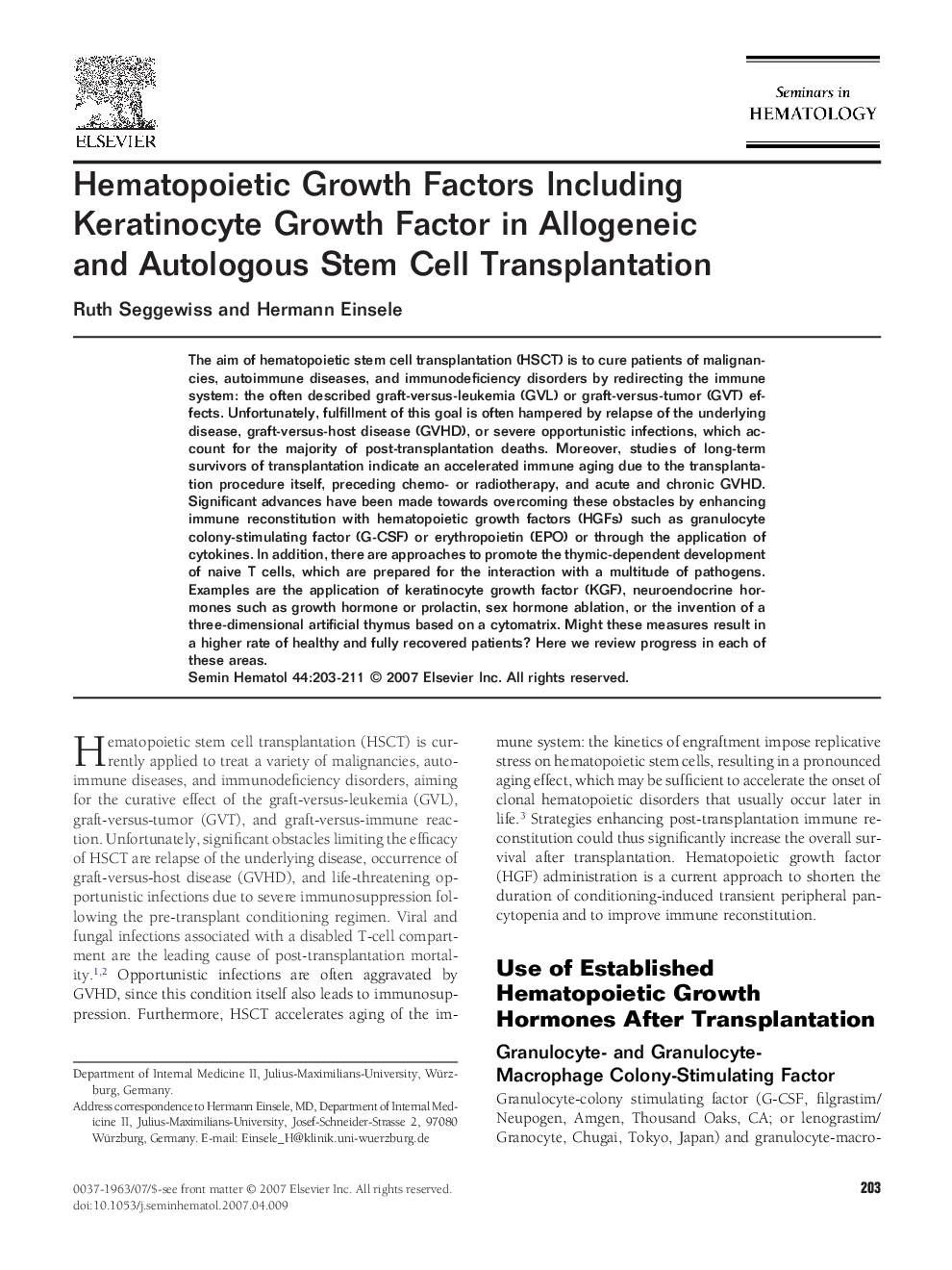| Article ID | Journal | Published Year | Pages | File Type |
|---|---|---|---|---|
| 3334209 | Seminars in Hematology | 2007 | 9 Pages |
The aim of hematopoietic stem cell transplantation (HSCT) is to cure patients of malignancies, autoimmune diseases, and immunodeficiency disorders by redirecting the immune system: the often described graft-versus-leukemia (GVL) or graft-versus-tumor (GVT) effects. Unfortunately, fulfillment of this goal is often hampered by relapse of the underlying disease, graft-versus-host disease (GVHD), or severe opportunistic infections, which account for the majority of post-transplantation deaths. Moreover, studies of long-term survivors of transplantation indicate an accelerated immune aging due to the transplantation procedure itself, preceding chemo- or radiotherapy, and acute and chronic GVHD. Significant advances have been made towards overcoming these obstacles by enhancing immune reconstitution with hematopoietic growth factors (HGFs) such as granulocyte colony-stimulating factor (G-CSF) or erythropoietin (EPO) or through the application of cytokines. In addition, there are approaches to promote the thymic-dependent development of naive T cells, which are prepared for the interaction with a multitude of pathogens. Examples are the application of keratinocyte growth factor (KGF), neuroendocrine hormones such as growth hormone or prolactin, sex hormone ablation, or the invention of a three-dimensional artificial thymus based on a cytomatrix. Might these measures result in a higher rate of healthy and fully recovered patients? Here we review progress in each of these areas.
